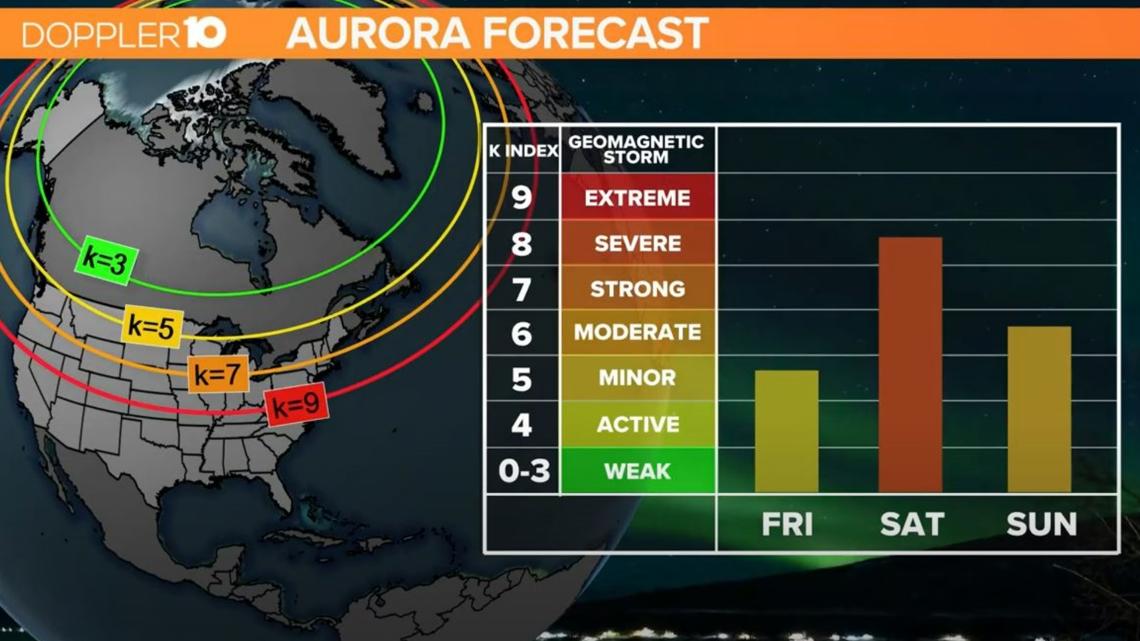A strong solar storm is headed toward Earth this weekend, bringing a chance for many Americans, including Ohioans, to see the northern lights.
The National Oceanic and Atmospheric Administration on Thursday upgraded a geomagnetic solar storm watch from Level 3 ("moderate") to the "severe" Level 4. The last time a severe warning was issued was in 2005.
A geomagnetic solar storm watch is a warning from the NOAA about potential activity on the sun's surface (called a coronal mass ejection) that could send waves of high-energy particles shooting toward the earth. When these particles hit the planet, they have the ability to mess with satellite communication systems, cause GPS problems and prevent high-frequency radios from working.
NOAA said the sun produced strong solar flares beginning Wednesday, resulting in five outbursts of plasma capable of disrupting satellites in orbit and power grids here on Earth. Each eruption — known as a coronal mass ejection — can contain billions of tons of solar plasma.
NOAA is calling this an unusual event, pointing out that the flares seem to be associated with a sunspot that’s 16 times the diameter of Earth. An extreme geomagnetic storm in 2003 took out power in Sweden and damaged power transformers in South Africa.
On Friday night or Saturday morning, the particles reached Earth, generating northern lights.


In central Ohio, those wanting to see the lights might have to get away from the city lights and head north. Friday’s geomagnetic storm is labeled as a minor storm, but early Saturday, it progressed to a severe storm.
On Saturday, the lights may not be as vivid, but there is still a chance many to the north in Ohio could catch a glimpse.
The main concern will be clouds blocking the view.
According to the Space Weather Prediction Center, the best aurora is usually within an hour or two of midnight (between 10 p.m. and 2 a.m.). These hours of active aurora expand towards evening and morning as the level of geomagnetic activity increases.
The northern lights should appear as a faint greenish glow which may appear to dance as it gets more active. Occasionally, other colors such as pink or red, will also be visible.
This could also be the best chance to see the northern lights in these places for a while. It's rare for such a strong solar storm to hit the earth, and they're unpredictable, meaning it could be years before anything like this happens again — and it may be even longer before a solar storm peaks at night, which makes viewing the northern lights much easier.

